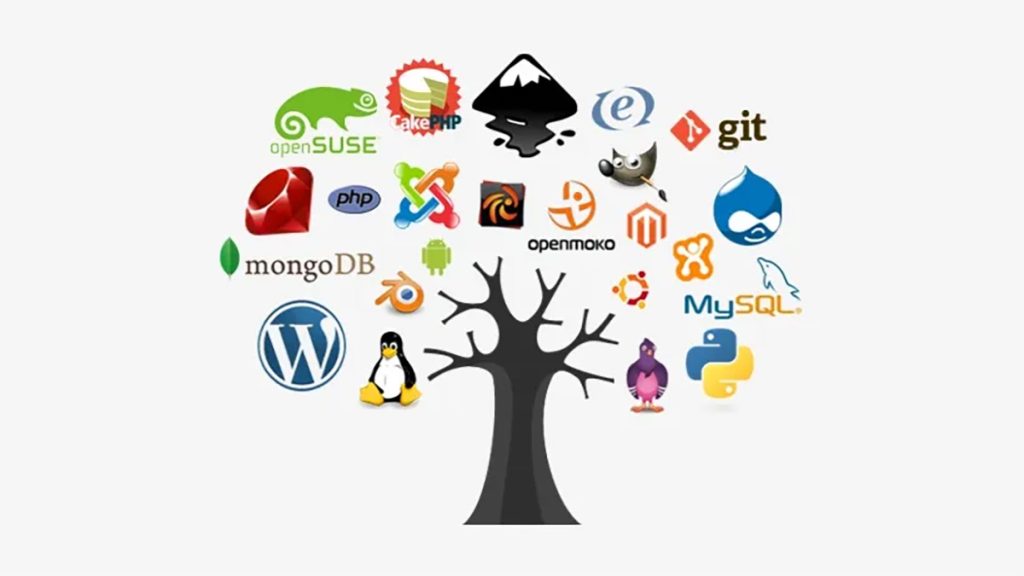Open Source Software Explained – This is generally those programs whereby the source code is freely available to download and access for anyone to view, edit, change and distribute.
What is open source?
The term Open Source refers to any program and its source code that is generally freely available for users to modify and use as other developers see fit.
In contradistinction, proprietary software, open source is developed with a public license and is open for collaboration by all developers and therefore made available to everyone. It can usually be found in software repositories like Git Hub.
What is the difference between open source software and all other types?
Often proprietary software has a source code where only one individual, team or commercial company created the software. This means they maintain exclusive control over it and only they can modify. It can also be called “closed source”.
Only the original authors of proprietary software have the legal right to copy, view, and alter it. In addition, to use proprietary software, the users must agree to legally binding terms and conditions that enforce the vendor’s legal right to ownership and control. Microsoft Office and Adobe Photoshop are examples of proprietary software.
Open source software explained like this is very different. Its developers make the source code available to others who would like to view and use that code, copy it, learn from it, alter it, or share it. Debian Limux, Apache, VLC Media Player, Firefox and GIMP are examples of open source software.
“The most common stipulation is that you cannot profit from open source software and any modifications must be shared with all.”
Although users of open source software must also agree to license conditions, these licenses do not affect the way the software is used so much. In general, open source licenses grant computer users permission to use the software for any purpose they wish. Some open-source licenses—state that anyone who releases a modified open source program must also release the source code for that software too. The most common stipulation is that you cannot profit from open source software and any modifications must be shared with all.
By design, open source software licenses promote collaboration and sharing as they permit many people to make modifications to the code and incorporate those changes into their own projects. They encourage computer programmers to access, view, and modify open source software whenever they like, as long as they let others do the same when they share their work.

A Light In a Dark Place
Why Do So Many People Prefer to Use Open Source Software?
People prefer open-source software to proprietary software for several reasons, including:
Control. Open-source software is often preferred by many because they have more control over the software itself. The code can be examined to make sure it’s not doing anything malicious or something do not want it to do, they can then change or improve any parts that are not preferred. Users who aren’t programmers can also benefit from open source software, because they can use the software for any purpose they wish—not merely the way someone else thinks they should.
Training. Other people like open source software because it helps them become better programmers. Because open source code is publicly accessible, students can easily study it as they learn to make better software. Students can also share their work with others, inviting comments and learning, as they develop their skills. When people discover mistakes in the original source code, they can share those mistakes with others to help them avoid making similar mistakes.
Security. Some people prefer open source software because they consider it more secure and stable than proprietary software. Because anyone can view and modify open source software, someone might spot and correct errors or omissions that a program’s original authors might have missed. Many programmers can work on parts of open source software without asking for permission from original authors, they can fix, update, and upgrade open source software more quickly than they can proprietary software.
Stability. Users prefer open source software to proprietary software for any important, long-term projects. Programmers can distribute source code for open source software, and users rely on that software for critical tasks can be sure their tools won’t disappear or fall into disrepair if their original creators stop working on them. Open source software often continues to be developed and improved long after the original developer has left the project.
Community. Open source software inspires a community of users and developers to form around it. That’s not unique to open source; many popular applications are the subject of gatherings and user groups. But with open source, the community isn’t just nerds and geeks that connect (emotionally or financially) to an elite group; it’s everyday people who produce, test, use, promote, and ultimately change the software and the way it works.
“People prefer open-source software to proprietary software”

Keep an eye out for related articles in our Information and Technology Section.
Open Source Software Explained Open Source Software Explained Open Source Software Explained Open Source Software ExplainedOpen Source Software Explained Open Source Software Explained Open Source Software Explained








